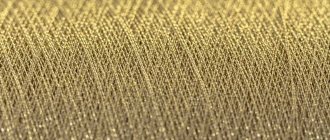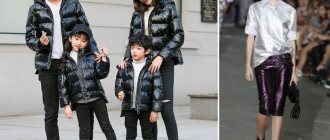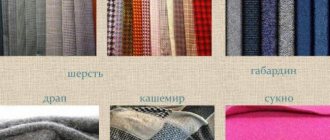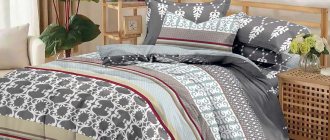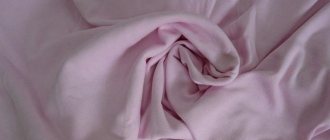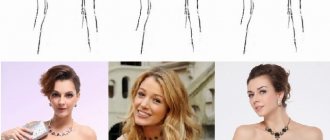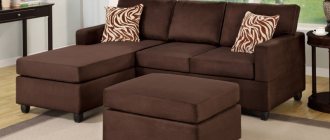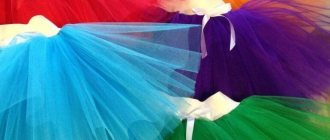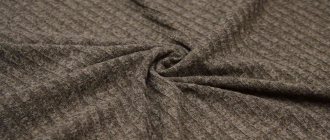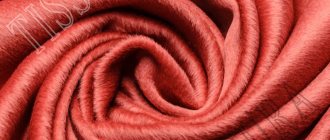Shiny fabric looks elegant and presentable. To make the fabric shine, metallized thread is added to it. Fabrics with a metallic sheen are called lurex - this is a material that is used when sewing festive clothes. Metal acts as a decoration, but you can also find everyday items with metallic decoration, for example, clothing and home textiles.
History of appearance
From the very beginning of the world, everything shiny has been a sign of wealth and luxury. This countdown dates back to the founding of Ancient Egypt, in which the pharaohs wore clothes with woven gold and silver threads. In those days, only precious metals could shine, since artificial threads did not exist at all. Therefore, only wealthy people could afford such luxury. Now there are artificial substitutes that allow you to imitate precious metals without such material costs, so you can look luxurious with little investment. Lurex is one such material.
T. Eyu Dolan contributed to its creation. He had nothing to do with the production of fabrics and it was not he who created Lurex. He was the owner of a cigarette packaging business. Dolan came up with the idea of placing aluminum fibers in plastic packaging, which made the aluminum much stronger.
This was the beginning of the journey of Lurex. When fabric manufacturers saw Dolan's patent, they were interested. Threads can be found in many fabrics and knitting yarns.
Application area
Let's figure out where shiny fabric is applicable. Unobtrusive glitter can set off the image, and excessive shimmer makes the ensemble look vulgar. Jump ropes and costumes for rhythmic gymnastics are made with lurex. Moreover, gymnastic ribbons and ropes with lurex make the performance more enchanting and festive.
At one time, fabric with lurex was very popular, and therefore appeared everywhere. Now designers offer metal in doses.
Cloth
The range of clothes with a metallic sheen is huge. More often than others, knitwear with lurex is used. It is used to make items primarily for women's wardrobes. If we talk about the purpose of products, then we distinguish:
- casual wear - a cardigan with lurex or a knitted turtleneck will complement traditional jeans. A skirt with lurex made of thick fabric will help out in the off-season. There are even sports suits with lurex on sale, or rather products with metallic trim. But sweatshirts with lurex, pullovers and sweaters look much more familiar. Lurex knitwear is created for feminine and romantic products. But it also makes youth and street items - a T-shirt or T-shirt with lurex will be an original addition to ripped jeans or leather leggings;
- elegant - blouses made of jersey with glitter or pleated floor-length skirts deserve a place in the holiday wardrobe. Shimmering sweaters with frills and flounces sit side by side with long Hollywood-style dresses. Shiny fabric is used to make not only elegant clothes for adults, but also for children. Just look at the shimmering christening suits for the little ones and the fluffy metallic lace dresses for the girls;
- the top one – a slight shine will set off a drape coat or bolognese jacket. Metal rarely appears in the decoration of outerwear, but for feminine coats and trench coats, metallic thread is indispensable;
- business – in a business wardrobe, excessive shine is not welcome, but if the metal content is low, it will be possible to refresh a skirt or jacket. A suit with lurex diversifies the image of a business lady. This can be a fitted blazer combined with a pencil skirt or straight trousers. A blouse with lurex will refresh a strict look, and wearing a shimmering product is worth wearing with muted office clothes. Light trousers with lurex, complemented by creases and a high belt, will become part of the summer wardrobe for the office.
Accessories
In the off-season and winter, fashionistas will be helped out by a hat with lurex - a beanie or cap. It will be replaced by a French beret or a colorful scarf with glitter. The list of stylish accessories includes a lurex scarf, snood or shirtfront. You can choose shimmering gloves under a women's hat with lurex, and a stole with lurex will decorate your elegant look.
Tights and stockings with lurex deserve special attention. They are created for seduction and provocation. Shiny stockings should not be included in your everyday wardrobe. But children's shiny knee socks or shoes with metallic laces can become part of a street wardrobe.
Needlework
Yarn with metal is in demand among knitters. Craftswomen knit berets and hats with lurex, jumpers and sweaters.
Embroiderers are also familiar with metallic threads. Lurex embroidery will decorate a bag or children's clothing. Satin or grosgrain ribbon with lurex can be used to trim the dress.
Interior
Elegant curtains with lurex are often used in the design of residential premises. They are designed for large rooms - living rooms, halls. But even in a small room, muslin with lurex would be appropriate - a light translucent curtain. Thread and Roman blinds with Lurex are suitable even for kitchen decoration.
Manufacturers of home products also offer bedspreads and canopies embroidered with metallized thread. Dense fabrics with shine are used to sew decorative pillows and covers.
What and how is thread made from?
The raw material for the production of Lurex is foil from various metals. It can be aluminum, brass, copper or nickel - they all have different shades, hence the variety of colors. And also, in order to obtain shades unnatural for metals (for example, purple or black lurex can be found on sale), the foil is additionally painted with various pigments.
After this, an emulsion is applied to the sheet, which dries and forms a film that provides protection to the foil. Thanks to it, lurex has greater tensile strength, while foil is easy to damage.
A new technology is the production of lurex from film, and to create color it is painted with glue. This material is stronger, and the color palette has become much more diverse.
Description and characteristics
Lurex is a shiny thread that is added to the structure of the fabric to create the effect of shine and luxury. It runs like an additional fiber intertwined with the threads of the material. This achieves an unusual look for the fabric, and if the Lurex is colored, the result is a melange shade.
Fabric with lurex added looks beautiful because its color shimmers in the light. And if you take, for example, black knitwear and add light lurex to it, you can create an imitation of the starry sky - this is a frequently encountered theme for imitation in clothing.
In addition to external qualities, it is worth noting that the fabric acquires greater strength, since Lurex is more difficult to tear than regular thread. Threads made not from foil, but from film, are especially distinguished by their strength.
The downside is a slight tartness. This happens because the lurex thread is not round, but flat, and when woven into the structure of the material, it can bend, forming sharp corners. But this is almost unnoticeable, and if you wish, you can wear a thin T-shirt under such a jacket.
Types of fabrics with lurex
Lurex is added to any fabric, both natural and artificial. Its content can range from 3 to 30 percent, the more, the more shiny the material will be.
- Polyester is one of the cheapest materials from which any wardrobe item is made. For example, you can purchase a polyester scarf with lurex thread.
- Cotton – Shine is also added to natural fabrics like cotton or linen. You can buy a cotton blouse with a small addition of lurex - this way it will not only be pleasant to the body, but also sparkle with beauty.
- Viscose is another artificial material, but of natural origin. Similar to polyester, many different clothes are made from it, to which lurex can be added.
- Knitwear is perhaps the most popular category of all. Lurex is woven into the structure so that the item continues to stretch, so even dresses with adjacent silhouettes can be combined with it.
Composition of sewing threads
As we have already said, sewing thread can consist of natural or artificial fibers; there are also options when fibers of different origins are woven into one thread. Let's figure out what threads are based on the raw material composition.
Natural fibers used to produce threads are cotton, silk, and linen. Fibers of chemical origin - polyester, polyamide, as well as lavsan and viscose.
cotton were used more ; they were used en masse for sewing clothes. Traditionally, they are used for all types of garments, including children's. 100% mercerized cotton, ideal for working with cotton fabrics. This type of thread is not subject to stretching and is suitable for sewing seams. There are also gray cotton threads that have not gone through the bleaching and dyeing process.
Sewing silk is a thread made from natural silk, which today has almost been replaced by artificial analogues. Industrial production practically does not use silk threads. Sometimes they are used for decorative stitching in hand sewing.
Linen thread is also used in a fairly limited number of operations in the modern textile industry. One way to use them is through tarpaulin products.
nylon and lavsan threads or a linen-lavsan (ll) mix were previously common in the territory of the former Soviet Union They were valued due to their resistance to moisture and thermal effects. These days these threads are also produced, but their use is no longer as widespread.
Today, threads made from 100% polyester are especially popular in the sewing industry and in home sewing work. They have an even thickness throughout, a uniform texture, are distinguished by impressive strength, and this thread is perfectly twisted. Synthetic polyester thread is ideal for use with any type of fabric on any sewing device, including an overlocker. Why? The properties of these threads are unique! They are strong and have a special smoothness, which is almost impossible to achieve when making threads from natural raw materials. They have great reviews and are suitable for a variety of materials.
In general, in almost all important parameters (including price), high-quality polyester threads are superior to their natural counterparts.
Types of yarn with lurex
Another popular category of products with shiny thread is yarn. It comes in several varieties:
- Synthetics – 100% acrylic.
- Natural - wool (for example, angora), cotton.
- Blended - for example, 50% wool and acrylic each (there may be other ratios, depending on the type of yarn).
Lurex can be added to any of these types, but is most often found in synthetic and blended types.
Care instructions
The material does not like experiments with temperature and detergents. Despite the fact that this is a synthetic material, which itself has sufficient strength and durability, it requires careful handling during washing. And also, in addition to the rules for caring for lurex, you should also pay attention to the fabric into which it is woven. For example, wool or cotton will not tolerate high water temperatures and hard powder.
It is advisable to wash the products by hand, but you can use the delicate washing cycle in the machine. It is better to set the number of degrees to no more than 30, and when using the machine, the item must be additionally protected by placing it in a special washing bag. It is worth considering this for wool and knitwear - they can become deformed. You should also avoid squeezing, but it is permissible to lightly squeeze the product from the water with your hands.
You can dry the item vertically by hanging it on a hanger, but it is worth remembering that if it is wool, it can stretch, then it is advisable to lay the jacket horizontally on a towel. Dry away from heaters and avoid direct sunlight.
Ironing is not recommended as the threads may melt under the soleplate of the iron. This can be done if there is little material in the composition (3%-5%), but only at a low temperature (synthetic mode) and through matter.
After washing and drying, you can store the item on hangers or put it folded on a shelf - this will not damage the shiny fibers.
Embroidery techniques
There are a huge number of types of embroidery with floss threads. Stitches can be very different. They can consist of different stitches and loops. This allows you to create different images and scenes on fabric or canvas.
One of the most interesting is the cross stitch technique. In this case, the drawing consists of small squares. The more shades there are in the picture, the more impressive it looks. Floss allows different colors to be combined into separate halftones and shades. Crosses can be small or large. Most often, embroidery is created on canvas.
The larger the crosses, the greater the number of threads you will need to take for work. If they are very small, stitches of 2-3 threads are enough. If the cross is medium or large, it is better to take 4-6 threads. In this case, the surface will be monolithic. The canvas will not show through under the threads.
When considering the types of embroidery with floss threads, it is also worth paying attention to the technique of creating a satin stitch pattern. It is the shiny texture of the threads that allows you to create bright, interesting images. Drawings created on fabric will allow you to decorate any clothing or textile products. In this case, several threads are also selected for one stitch. They are evenly distributed over the surface.
Floss is prized for its ability to imitate the look of natural silk. Embroidery in this case looks very impressive.
